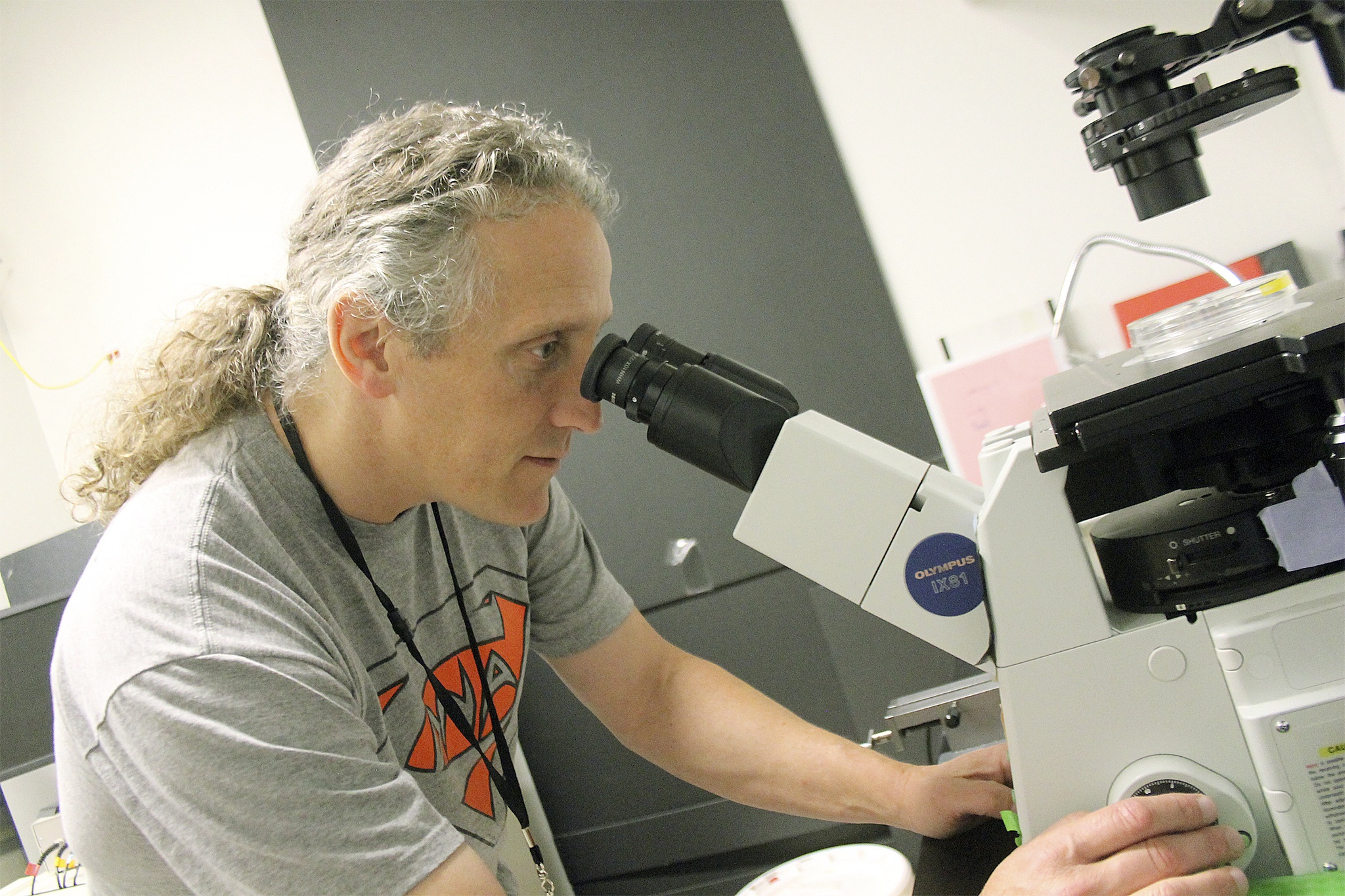Mercer Island High School science teacher Larry Bencivengo has always had an interest in neuroscience. His interest in ophthalmology has, in its own way, come about with age.
“As I’m getting older and developing problems with my own with vision, I can relate a lot more,” Bencivengo said.
This summer, Bencivengo began his first of two summers conducting ophthalmology research with Dr. Russell Van Gelder, professor and chair of the Department of Ophthalmology at the University of Washington and director of the UW Medicine Eye Institute. Last April, Bencivengo was awarded a grant in the Partners in Science program of the M.J. Murdock Charitable Trust to conduct the research.
Van Gelder’s lab is researching a method to restore vision to people with certain types of retinal degeneration. Van Gelder, who moved with his family to Washington in 2008, said he’s been working on the physiology of the retina since he began his lab nearly 20 years ago as a faculty member of University of Washington in St. Louis.
His group established a collaboration with another group at UC Berkeley in 2007, which had an idea about how to potentially restore light sensitivity to blind retinas.
“It started out as just sort of a wild idea and then over the past seven years or so, we’ve reduced that wild idea to practical application,” Van Gelder said. “We’re at the point now where we have several chemicals that look very promising, that we may be able to bring forward to human clinical trials at some point in the foreseeable future.”
Bencivengo, who will begin his 23rd year teaching biology at MIHS this fall and taught Van Gelder’s son, Max, in his class, didn’t have a lot of experience working in the ophthalmology area. But he couldn’t pass up the opportunity to try something new.
“I’ve always had a big interest in neuroscience,” Bencivengo said. “When I got that email and found out what Russ was working on, I jumped right in.”
“The idea that this might help people at some point in the future is pretty exciting. But also just the basic science of it, any aspect of how our brains work and how we perceive the world, I’ve always found really fascinating. Having the ability to do some of the basic science just really appealed to me.”
Van Gelder’s lab works on mouse eyes to collect its readings and data, which requires a microdissection to remove the retina out of an eye that is two millimeters in size.
“It’s technically a very challenging procedure to keep a retina alive, or any tissue alive, where we can get it on a recording platform where we can listen to each cell individually,” Van Gelder said. “That takes most grad students a couple months to really get the hang of before they get very consistent doing it.”
When teaching science, Bencivengo believes it’s important to also teach the process of science. He said without actual experience working in a lab, that can be abstract.
“It’s great to be a student again. That’s essentially what I am,” Bencivengo said. “I think it’s important that if you’re going to be an effective teacher, to remember what it’s like to be a student. It’s always useful to have that experience, but it’s also stimulating. I’d be very happy sitting around and sleeping in over the summer and getting some work done on the yard, but this is a lot more intellectually stimulating.”
As a teacher, Bencivengo said his experiences in the lab help influence what he incorporates into the classroom. He said he’s kicked around some ideas about integrating the work he’s done with retinas into his curriculum, adding he’s still figuring out exactly how to make it work for his class.
“The challenge is there’s this huge chasm between what happens on the frontiers and what’s happening in the high school classroom,” Van Gelder said. “The danger is you have these kids who are very motivated, have that natural intellectual curiosity that 15-16 year-olds really have, how do you ensure that that’s harnessed and that they can see where the end points are without getting lost in all the detail and factual knowledge? It’s one thing to teach the structure of DNA, it’s another thing to teach how the structure was discovered.”
“I’ve found that students like doing something that’s just a little different,” Bencivengo said. “When you bring something like this into your classroom, you don’t have to tell them, they know that this is not a typical thing for high school students to be doing.”
“I’m excited about what will actually happen in my classroom. Whatever that turns out to be, I know it will be interesting.”


